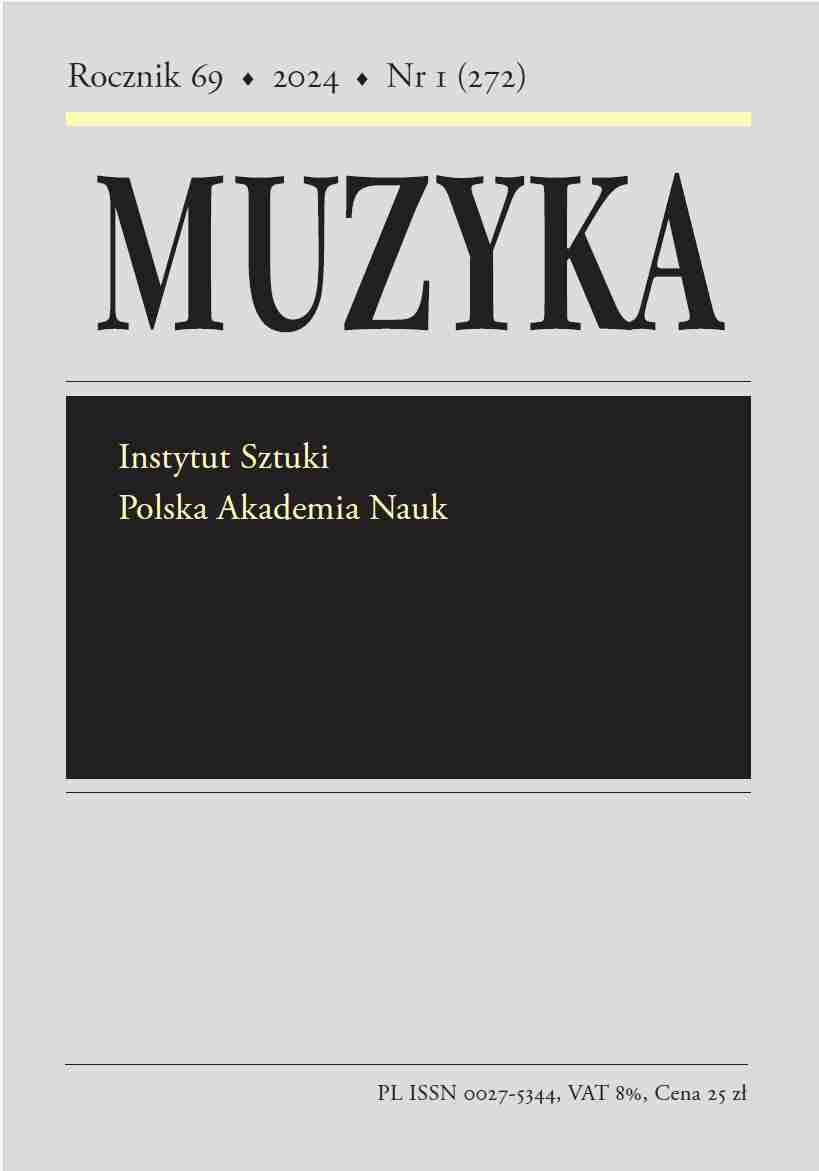The musical aspects of Władysław S. Reymont’s pilgrimage on foot to Jasna Góra Monastery
Barbara Śnieżek
Institute of Art of the Polish Academy of Sciences (Poland)
https://orcid.org/0000-0001-5392-8951
Abstract
For the centenary of the Kosciuszko Uprising, on 5th May 1894, Władysław Reymont, then a 27-year-old beginner writer, joined a pilgrimage from Warsaw’s Praga district to Jasna Góra. His aim was to write a report on the pilgrimage for Tygodnik Ilustrowany weekly. First published in instalments and later as his book debut (A Pilgrimage to Jasna Góra. Impressions and Images, Warsaw 1895), it was favourably received by the critics and earned the young writer some recognition.
Reymont’s ethnographic account of the journey to Jasna Góra is a model example of what van Gennep calls the liminal phase of a rite of passage, and of Turner’s communitas. The book also contests some types of discourse and attitudes (Eade, Sallnow), frequently reflected in the musical activity of the pilgrims. By describing the song and music, the author presents both the moods of his journey companions and his own. His text abounds in descriptions of music events, such as meeting a wondering beggar-singer, the May devotions to the Blessed Virgin Mary, as well as a holy mass on Jasna Góra.
Reymont’s report also describes the audiosphere of late 19th-century pilgrimages. The author characterises (in a literary fashion) all the sounds and noises that he discovered in the changing soundscape during his journey. He also describes the soundscape of the travelling company itself, on the move and in periods of rest. Group singing allowed the pilgrims from Praga to domesticate the liminal phase of the pilgrim rite, marked by suffering, and make the journey situation familiar as well.
Reymont’s Pilgrimage to Jasna Góra demonstrates the writer’s sensitivity to music. He later introduced musical topics in his novels The Peasants and Ferments, while the experience of a pilgrimage recurs in The Peasants as well and in the novelette Mother.
Keywords:
Władysław Reymont, pilgrimage, Jasna Góra, audiosphere, liminality, contesting, journey, music, singingAuthors
Barbara ŚnieżekInstitute of Art of the Polish Academy of Sciences Poland
https://orcid.org/0000-0001-5392-8951
Statistics
Abstract views: 537PDF downloads: 469
License
Copyright (c) 2019 Muzyka

This work is licensed under a Creative Commons Attribution-NonCommercial-NoDerivatives 4.0 International License.
The author grants the publisher a royalty-free nonexclusive licence (CC BY 4.0) to use the article in Muzyka, retains full copyright, and agrees to identify the work as first having been published in "Muzyka" should it be published or used again (download licence agreement). By submitting an article the author agrees to make it available under CC BY 4.0 license.
Articles from 2018/1 to 2022/3 were published under a Creative Commons license CC BY-NC-ND 4.0. During this period the authors granted the publisher a royalty-free nonexclusive license (CC BY-ND 4.0) to use their article in "Muzyka", retained full copyright, and agreed to identify the work as first having been published in our journal should it be published or used again.
Most read articles by the same author(s)
- Barbara Śnieżek, Religious Songs at the Sacrosong Festival from 1969 to 1978 , Muzyka: Vol. 66 No. 2 (2021)
- Barbara Śnieżek, Frédéric Chopin: "Trois Fugues de Luigi Cherubini mises en partition de piano". Fac-similé et transcription présentés par Jean-Jacques Eigeldinger, Paris 2017 , Muzyka: Vol. 63 No. 4 (2018)










